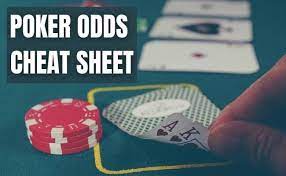The first and probably the easiest way to right your poker odds is to calculate your pot odds and payoff risk. Not a whole lot of people bother to take this step, which is quite simple.
The second thing to consider is to calculate your implied odds. This is the amount of money (or implied) that the pot will yield if you successfully catch your card in a later betting round. This process is not as easy as the previous ones however.
Let’s consider an example: You are on the button (after seeing the flop from the blinds and antes), in middle position and the flop comes down Kc-8c-2h. Your position is critical here, as it will have a big impact on the speed at which you will play your hand. In this case, being in “First Position” will practically mean that you need to catch your Ace or a King in the next 2 betting rounds or you will simply not play the hand. In contrast, a suited connector such as 6-7 or 8-9 is much better after the flop, as it can catch a bigger piece of the pot in the next few betting rounds.
The implied odds for your hand are the second way to calculate whether you should chase your flush. Simply stated, if the pot is offering you a large enough payout to make it worth your while to call, then you are getting implied odds.
However, just as we desire to understand poker odds, we must first understand the different kinds of odds. There is the pot odds, the win odds, the call odds, and the lay odds. In addition, there are also implied odds, and they are compile simply on the basis of the strength of your hand and the hand of your opponents, without taking the actual hand into consideration. In this sense, implied odds are more sophisticated, as compared to the simple pot odds.
Pot odds: The amount of money in the pot relative to the amount of money it would take to call the bet.
Win odds: The actual odds of catching your card.
Call odds: Comparing the amount of money it will cost you to call a bet, versus the actual odds of catching your card.
Lay odds: The actual odds of not catching your card.
There are two other important notions to consider with the continuation bet. What are your odds of catching your card? As stated earlier, your implied odds are the ratio of the payout you will make to the actual odds. To be a successful poker player, you must know not only your own hand odds, but also your opponent’s hand odds, when you make a decision on whether to call off your hand or not.
The implied odds are the ratio of the payout you make to the actual odds. When you consider your implied odds, you are also taking into consideration the strength of your hand and what the other players may have. For example, if you have A-6 and the flop is A-2-3, you will obviously need a pair, or at least a strong one, to ensure a profitable play. If you are offered a $10 bet, your implied odds are 5 to 1, or 5 to 1, assuming you are calling Dewalive.
It is important to remember that implied odds are not always a sign of good odds. It is entirely possible that you will be made to believe that you are getting close to a winning hand, when in fact you are not. This is why you need to remember your opponents, and not just the odds.



